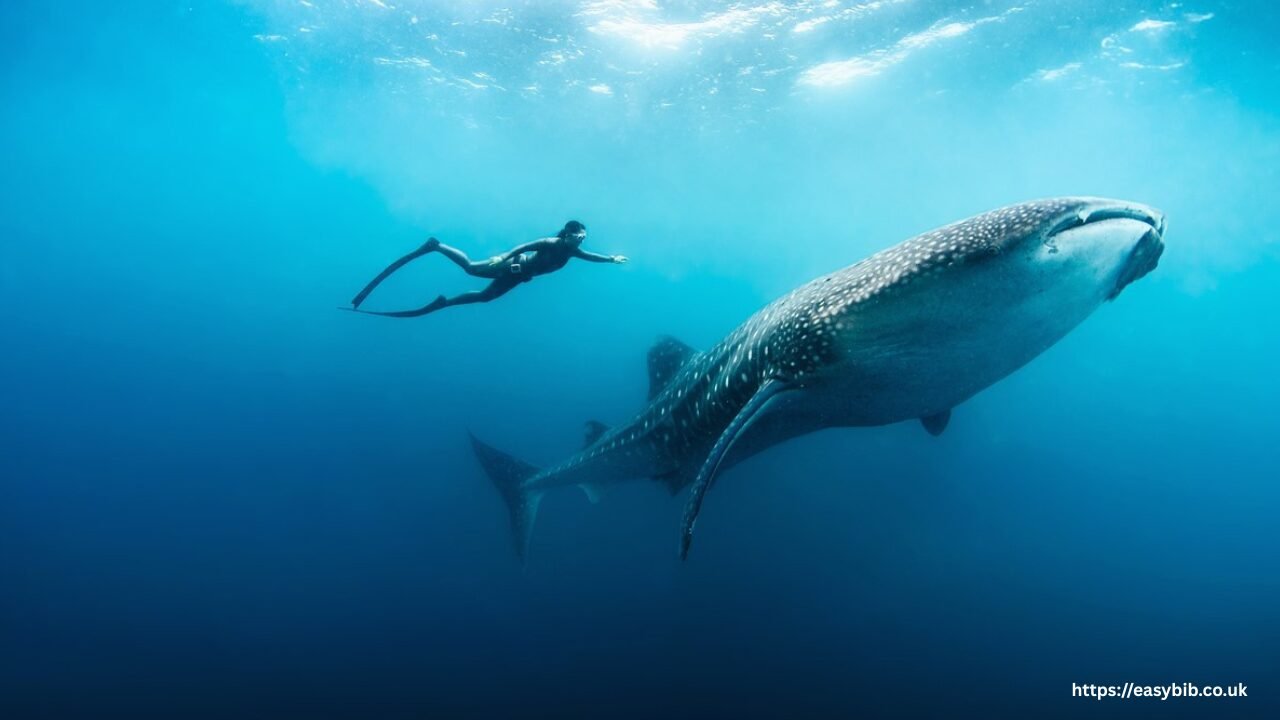Whale Shark Season Maldives: When and Where to See the Gentle Giants

If you’ve ever dreamed of swimming alongside the world’s largest fish in one of the most stunning marine environments on Earth, then the whale shark season in the Maldives is precisely what you’re looking for. With crystal-clear waters, year-round warm temperatures, and one of the richest marine ecosystems on the planet, the Maldives is a global hotspot for whale shark encounters.
This guide explores the best times and locations to spot whale sharks in the Maldives, provides guidance on how to swim with them safely, and explains why this archipelago is one of the top destinations for marine enthusiasts and divers alike.
What Makes the Maldives a Whale Shark Hotspot?
The Maldives is situated in the warm, nutrient-rich waters of the Indian Ocean, and its unique geography — comprising 26 atolls and over 1,000 islands — provides an ideal environment for whale sharks to feed, migrate, and thrive.
Why Whale Sharks Come to the Maldives
- Plankton-rich currents: These giants feed primarily on plankton, which flourishes in the Maldives thanks to seasonal monsoon-driven currents.
- Consistent temperatures: Warm sea temperatures (27–30°C) make the Maldives a suitable year-round environment for whale sharks.
- Protected areas: Conservation efforts such as marine protected zones in the South Ari Atoll help create safe spaces for whale sharks to roam.
When is Whale Shark Season in the Maldives?
Year-Round Presence, Seasonal Peaks
Whale sharks can be spotted in the Maldives all year, with South Ari Atoll offering the most consistent sightings. However, the best chances for consistent sightings are during the Southwest Monsoon (May to December).
| Season | Months | Whale Shark Activity |
| Southwest Monsoon | May – December | High sightings; plankton blooms |
| Northeast Monsoon | January – April | Moderate sightings; clearer visibility |
During the peak months (August–November), whale shark encounters become particularly frequent due to the higher density of plankton.
Top Locations to Spot Whale Sharks in the Maldives
1. South Ari Atoll (Ari Beach)
Known as the premier destination for whale shark encounters in the Maldives, South Ari Atoll features several hot zones where these majestic creatures are spotted regularly — especially between Dhigurah, Maamigili, and Rangali.
- Type of Experience: Snorkelling or diving
- Accessibility: Easily reachable by liveaboard or speedboat from nearby islands
- Frequency: Highest in the country
2. Maamigili Marine Protected Area
This area is protected under Maldivian law and often used by researchers and conservationists. It offers some of the best chances to swim alongside multiple whale sharks in a single day.
3. Dhigurah Island
A long, narrow island in South Ari, Dhigurah, is not just picturesque but also strategically located near many whale shark dive sites. Resorts and guesthouses here often organise daily excursions.
How to Swim with Whale Sharks Responsibly
Whale sharks are gentle filter feeders and pose no threat to humans. However, ethical interaction is crucial to ensure their well-being.
Key Guidelines
- Maintain a respectful distance: Stay at least 3 meters from the body and 4 meters from the tail.
- Do not touch or ride: This can cause stress or injury to the shark.
- Avoid flash photography: It can disturb or disorient the animal.
- Stay calm and move slowly: Sudden movements can frighten the shark and ruin the experience.
Scuba Diving vs Snorkelling: Which is Better?
Both options offer incredible opportunities to encounter whale sharks, but they come with slightly different advantages:
Snorkeling
- Best for surface-level encounters
- No certification required
- More freedom of movement
Scuba Diving
- Offers deeper, more prolonged interactions
- Ideal for capturing underwater footage
- Recommended for certified divers
The Role of Liveaboards in Whale Shark Safaris
For enthusiasts looking to maximise their whale shark encounters, liveaboards are an excellent option. These floating dive resorts move through the best regions at optimal times, often including multiple dive sites in a single itinerary.
Benefits of choosing a liveaboard for whale shark safaris:
- Access to remote, less crowded locations
- Expert dive guides and spotters
- Flexible scheduling based on shark movement
- All-inclusive meals and accommodation
Conservation and Whale Shark Protection in the Maldives
The Maldivian government has implemented various measures to protect whale sharks, including:
- Creating Marine Protected Areas (MPAs) like the Maamigili MPA
- Banning harmful fishing practices in shark zones
- Partnering with NGOs for monitoring and research
Local communities and tourism operators also play a crucial role in conservation by educating visitors and encouraging eco-friendly practices.
Tips for a Successful Whale Shark Encounter
- Go early: Mornings often offer calmer seas and better visibility.
- Choose responsible operators: Look for those who follow strict guidelines for marine interaction.
- Bring the right gear: Wide-angle camera lenses, reef-safe sunscreen, and rash guards are highly recommended.
- Stay patient: Nature doesn’t follow a schedule — sometimes it takes time to find the gentle giants.
Final Thoughts: Why the Maldives is the Best Place to See Whale Sharks
The Maldives offers one of the most consistent and awe-inspiring experiences with whale sharks in the world. From the nutrient-rich waters of the South Ari Atoll to the well-managed marine reserves and responsible tourism infrastructure, everything is designed to protect and showcase these gentle giants.
If swimming with the largest fish in the sea is on your bucket list, there’s no better place than the Maldives during peak whale shark season.
For those who wish to explore these marine marvels in comfort and style, the Spirit of Maldives offers curated liveaboard experiences that bring you face-to-face with whale sharks, manta rays, and the vibrant reefs of this tropical paradise.
